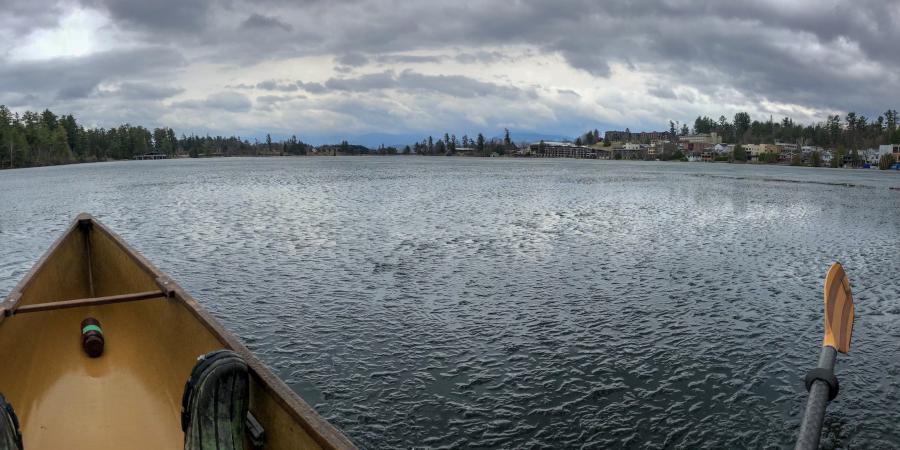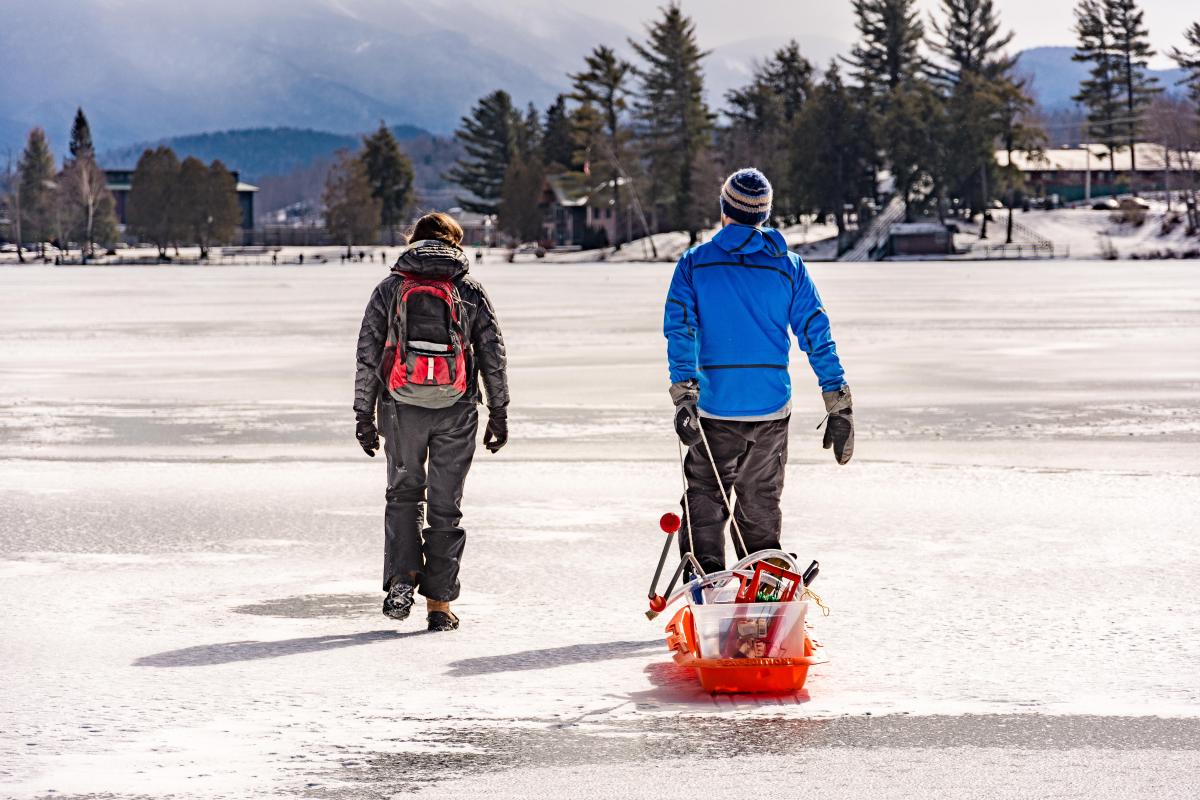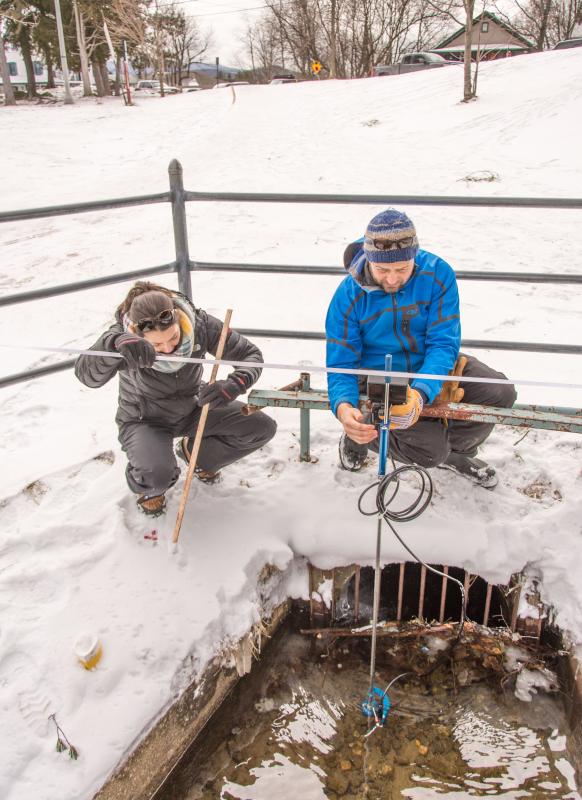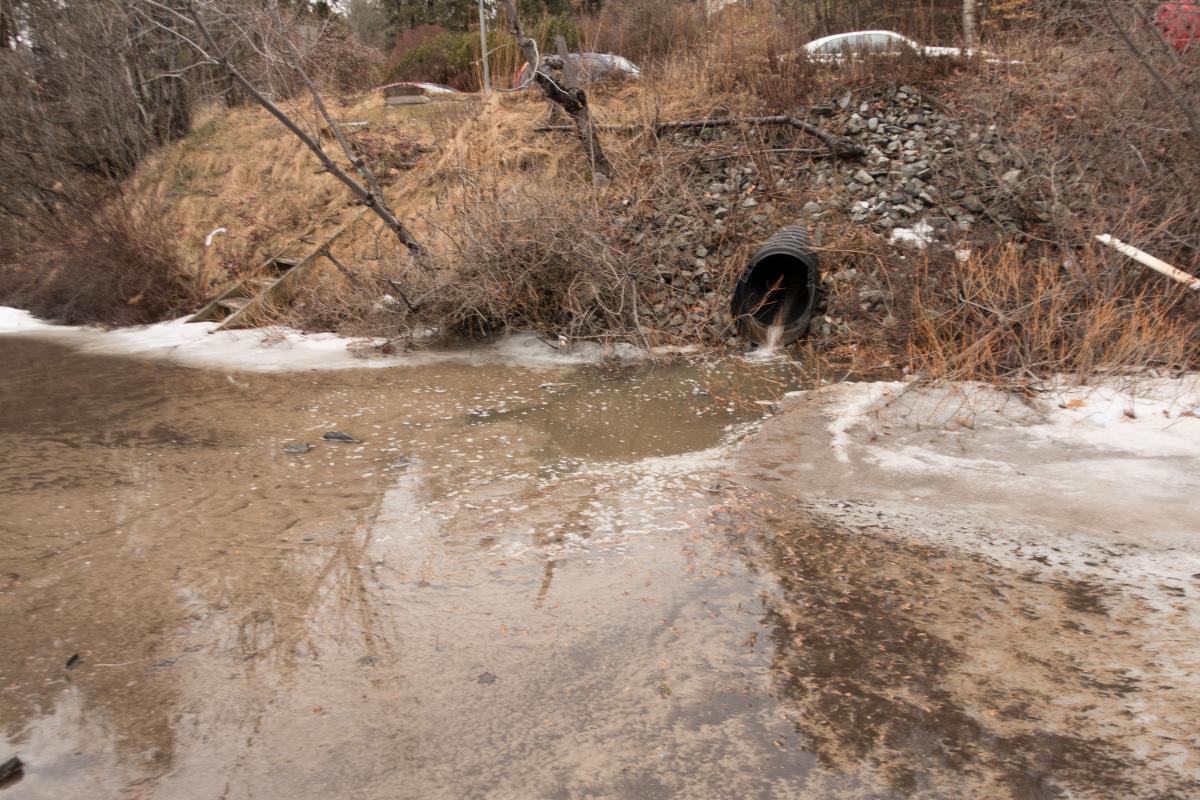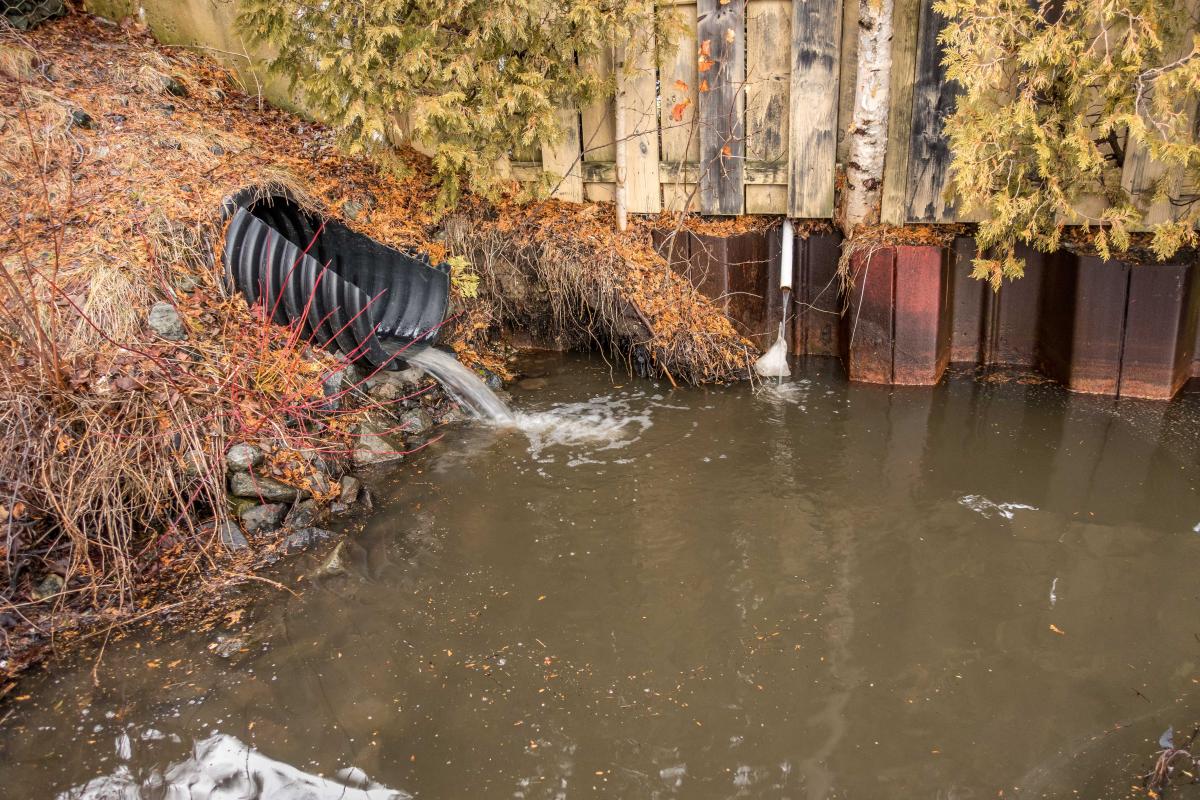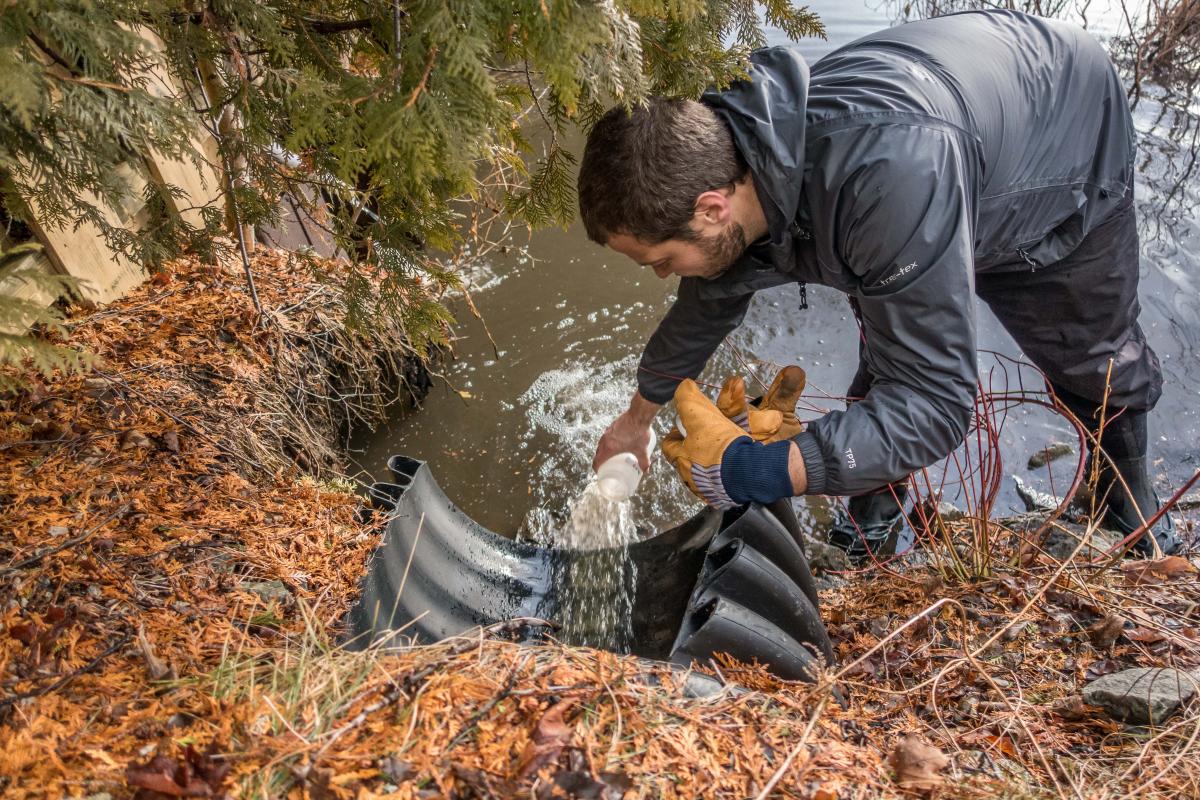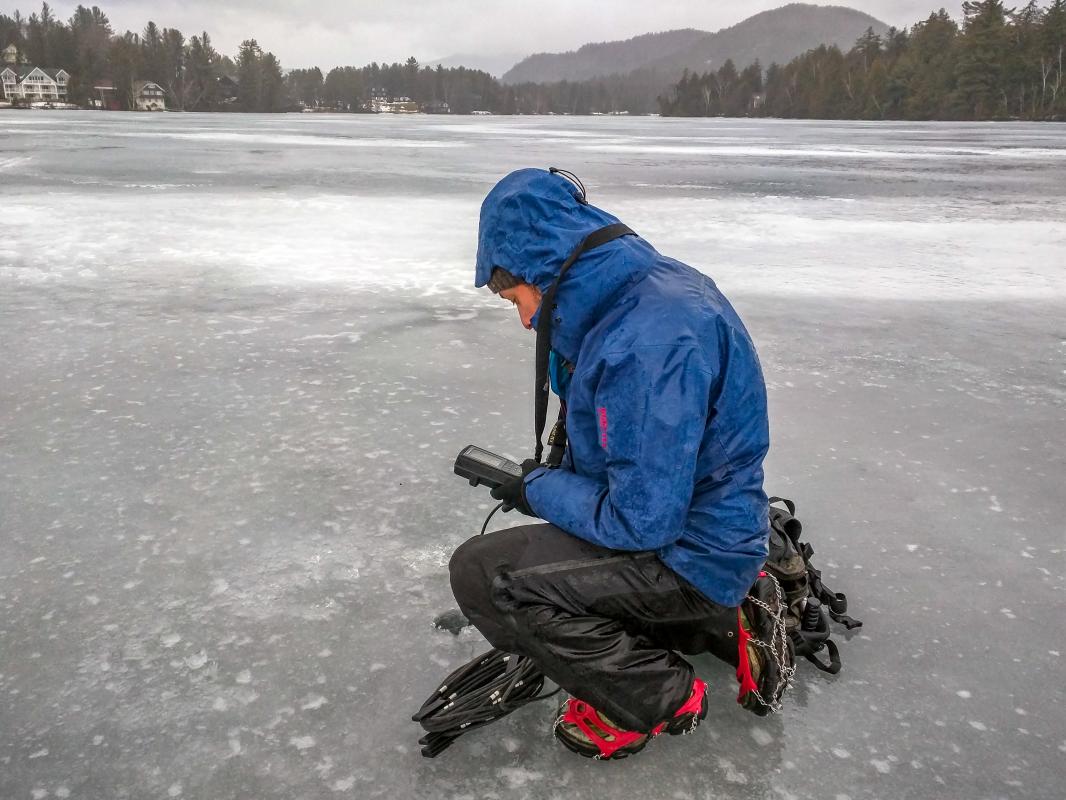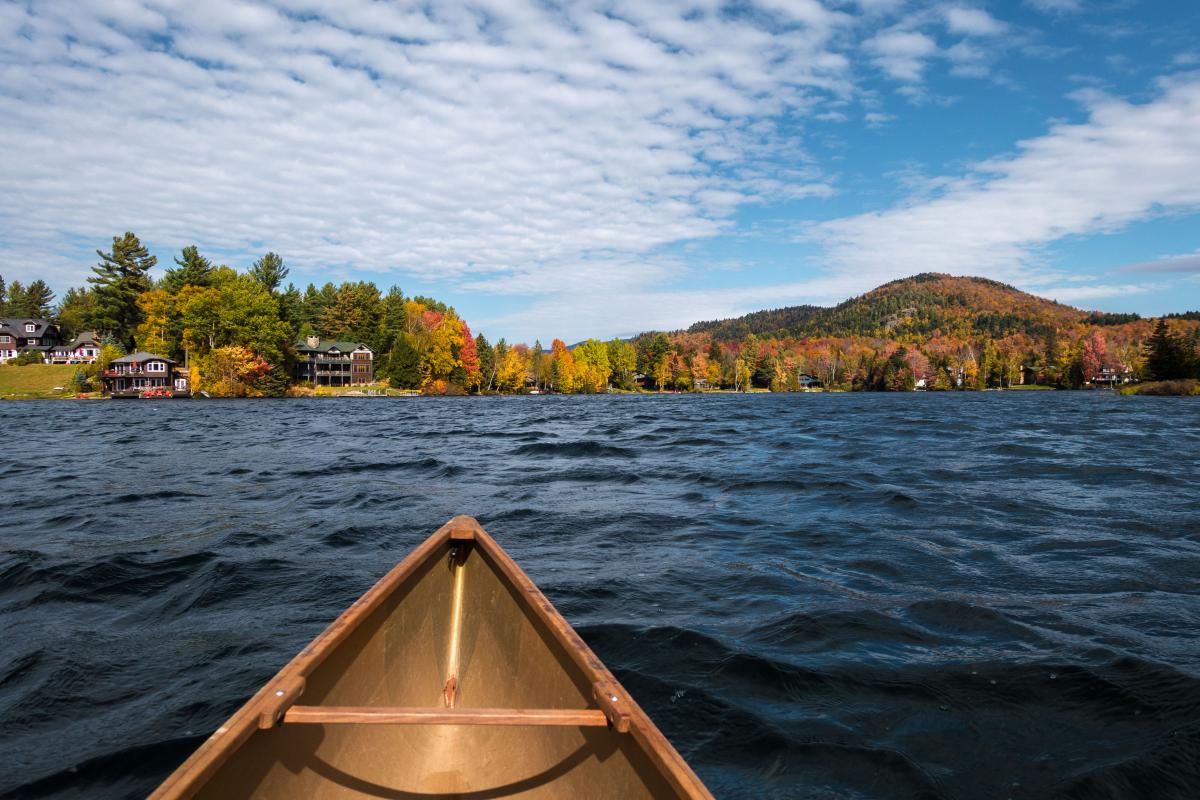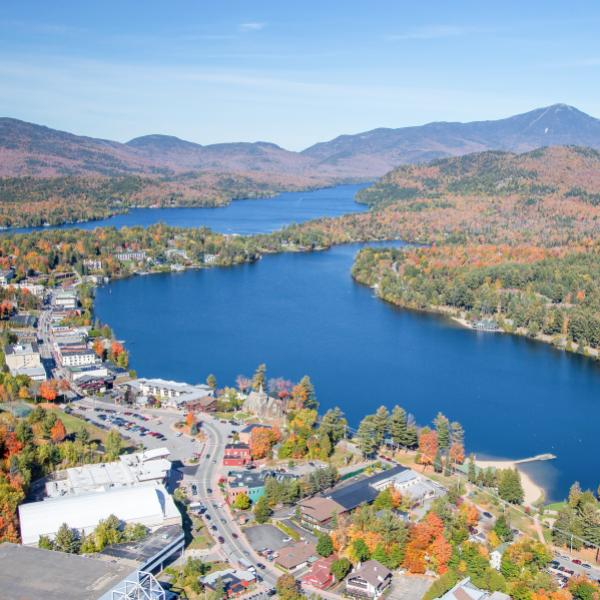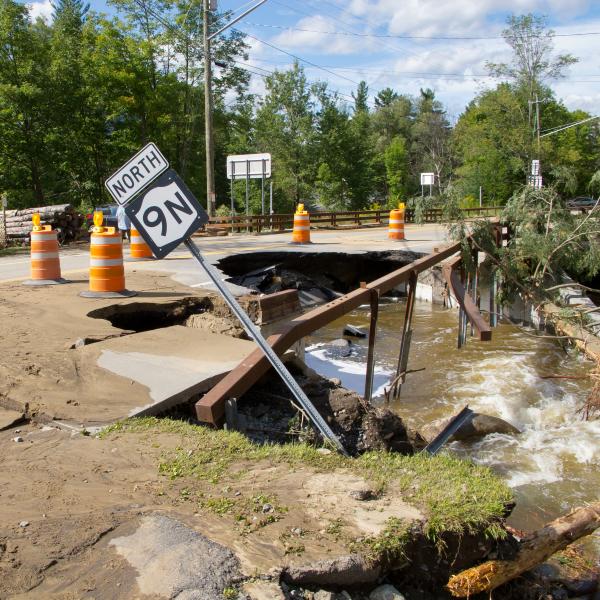May 18th, 2015 was the first day I visited Mirror Lake as a scientist. A recent report by the Adirondack Lake Assessment Program showed Mirror Lake had sodium and chloride concentrations higher than 97% of the Adirondack lakes monitored through that program. AsRA’s Kelley Tucker and I discussed those findings and we decided to invest my time to study the lake more closely. As I paddled my Hornbeck across the lake that spring, I considered the challenges the lake must be facing due to the development concentrated around its shores. Without a doubt, this was one contributing factor to the lake’s high salt concentrations. At the same time, I appreciated the resilience of this beautiful little body of water. Two loons greeted me as I made my way to the deepest spot in the lake. It was obvious they were accustomed to people, they didn’t sound an alarm or show any signs of stress as I passed just a few feet from them. That encounter also helped me understand how much the community is connected to and loves Mirror Lake. There is hardly a day where you can look across its calm surface and not see people out enjoying it.
Once at my sampling location, I anchored my canoe and got to work. I wasn’t expecting to find anything intriguing during this visit. But as I collected data on the profile of the water column, a level of sampling only completed on Mirror Lake a handful of times in its history, I noticed something curious. The conductivity of the water, an indirect measure of the amount of dissolved salt, was much higher at the bottom of the lake than the top. There was also a surprisingly low amount of dissolved oxygen at the bottom considering spring turnover should have occurred about six weeks earlier.
These two phenomena, high salt and low oxygen at the bottom of the lake, presented an intriguing situation. If the lake had mixed just weeks earlier, why was salt apparently built up at the bottom of the lake and why wasn’t there higher oxygen concentrations? The obvious answer was that the lake hadn’t mixed that spring as we would have expected it to. It would take two years, over a thousand measurements of the water column, hundreds of hours, and dozens of water samples to confirm the answer to this very important question. We now know that dense salt-laden water running out of the stormwater system circling the lake accumulates at the bottom of Mirror Lake throughout the winter. We also know that the density differences in the water column due to salt substantially increase the amount of energy required to mix the lake in the spring. In 2017, we observed enough salt build up over the winter to prevent the lake from mixing.
Mirror Lake’s name alludes to one of the reasons why it is particularly susceptible to road salt inhibiting its natural mixing regime. With its long axis oriented perpendicular to the primary direction of the wind and being sheltered by a large hill on the windward side of the lake, the surface of Mirror Lake is often still and calm even on a moderately breezy day. This lack of wind exposure allows the lake surface to frequently offer perfect reflections of the surrounding mountains, but it also means the lake receives very little wind energy to help it mix. Instead, lake mixing depends on water temperature driven density differences. Without the addition of salt, the change in density due to water temperature would be enough to mix the lake. But with the salt, it isn’t enough. And so, without additional wind energy, the lake doesn’t mix.
As a result of the lack of mixing, the salt-laden water gets trapped at the lake bottom until the fall, the oxygen in that water isn’t replenished, and it gets used up by respiration from bacteria, fish, and other aerobic organisms. This poses significant problems for the lake and, if the lake were to stop mixing in the fall, there would be a cascade of negative effects over the following winter that would threaten much of the life in the lake. Our addition of salt to sidewalks, parking lots, and roads has disrupted a fundamental physical process that influences the chemistry and biology of the entire lake.
Identifying A Solution
The solution to Mirror Lake’s problem may seem simple: reduce salt use. On the surface, that is what we need to do, but the devil is in the details. We need to maintain safe walking and driving surfaces for the public. It’s critical that visitors and residents be able to travel around the Village of Lake Placid safely. Therefore, we can’t just stop salting the sidewalks and roads and do nothing else. In order to identify an effective and sustainable solution that both protects Mirror Lake and provides safe surfaces in the village, science is the best guide and measure of effectiveness for our decisions. The first step is to start measuring annual salt application within the Mirror Lake watershed, not only by the village, town, and state, but by private and commercial applicators as well. This will give us a benchmark by which we can gauge the success of salt reduction efforts. It will also have the added benefit of quickly identifying small investments that can be made to reduce salt application rates, which will result in cost savings and help Mirror Lake. The second step is expanded monitoring of stormwater discharge, as well as the inlet and outlet of the lake. This will allow us to relate salt application rates to the condition of Mirror Lake and, most importantly, to develop models that will help determine the reduction in salt necessary to restore turnover and set Mirror Lake on a path of recovery. Without knowing these two important pieces of information, we are shooting in the dark, and risk making substantial investments that don’t achieve the reduction in salt use necessary to protect the lake.
The eventual solution will likely require a mix of best management practices, from Live Edge plows to heating sidewalks and parking lots. Investing too much in those solutions now, without knowing which mix is necessary to achieve the reductions in salt necessary to protect the lake, risks spending time and money on solutions that won’t substantially improve the condition of Mirror Lake.
What will it take to accomplish this work? The good news is AsRA and our partner, Adirondack Watershed Institute (AWI), have the technical and scientific expertise to complete this work. To establish salt reduction targets and systems to assess the effectiveness of best management practices will cost $220,000 to $300,000 over a three-year period. AsRA is currently seeking grant funding, foundation support, and private giving to support this effort.
If you wish to support our ongoing work to protect Mirror Lake consider making a gift towards this project.
Authored by Brendan Wiltse.
Top Photo: Brendan sampling Mirror Lake on May 3rd, 2018 through the last bit of skim ice remaining on the lake. Sampling immediately upon ice out is critical to understanding how salt is impacting the natural turnover, or mixing, of the lake.
Our ongoing work on Mirror Lake is supported by Golden Arrow Lakeside Resort & Holderied Family Community Fund (Adirondack Foundation), Mirror Lake Inn Charitable Fund (Adirondack Foundation), IRONMAN Foundation, Town of North Elba, Village of Lake Placid, Mirror Lake Watershed Association, and Branch Creek.
